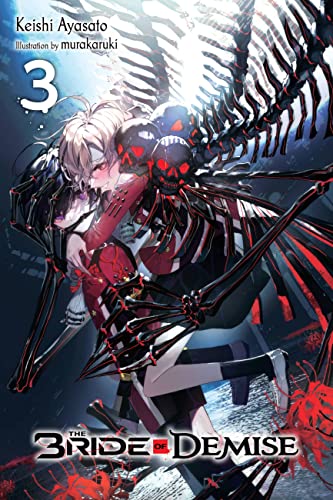By Keishi Ayasato and murakaruki. Released in Japan as “Shūen no Hanayome” by MF Bunko J. Released in North America by Yen On. Translated by Jordan Taylor.
When I reviewed the second volume of this series, I noted that the first was a fantastic stand-alone, but the second volume was not nearly as good as the first. It would appear that most of the reading public agreed with me, as apparently the series’ sales were so bad the author was allowed to comment in the afterword that this third volume is the final one because of low sales. Unfortunately, I am here to say that this third volume is not nearly as good as the second. It has big Shonen Jump “please look forward to the author’s next work” vibes. The first half, at least, looks like it’s setting things up for future volumes down the line. But about 60% of the way through, you can almost see the point where the author was informed by the editor that this is the last book, and the rest is just a race to a finish line. Not the best finish line, but one that will have to do.
Things are back to normal with Kou… relatively. After the last go round of getting murdered over and over again, and rewinding time over and over again to fix it, Kou’s powers are no longer an immediate ‘get out of jail free’ card, and he can’t always use them when he wants to. That said, he’s also got to deal with more teenage boy problems. Let’s remember the warning that Asagiri was the only one who murdered him last time WITHOUT being mind controlled. And now she has been told – by someone unknown – that he has White and Black Princess, and so decides to go all out in confessing to him. And is rejected. Adding to this teen drama, their fried Isumi is in love with Asagiri, knows she’s in love with Kou, and is busy trying to keep himself from having a complete breakdown. That’s right about when Asagiri completely disappears.
This book didn’t help itself by having a couple of things I really don’t enjoy in my fiction. I’ve never liked the “yandere” trope in general, especially since it tends to be overused by fans to describe any girl who gets angry at all, but it’s definitely in place here, and I still don’t like it. There is a new character introduced here whose role is very obvious almost immediately, and especially when the author starts trying to wrap everything up all at once. On the bright side, the overall message of “you can’t always protect everyone equally, you have to prioritize those you care about” is a good one well handled, even if this also involves abandoning an entire school of students to their inevitable deaths.
The author said that if the series had continued, more of the regulars would have had to tragically die, so this is a decent place to end it. If I’m honest, two volumes ago was a decent place to end it. But if you’ve read the first two, this is here, I suppose.
